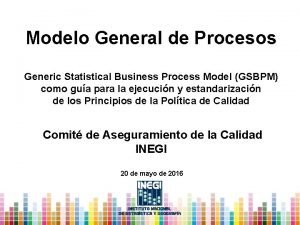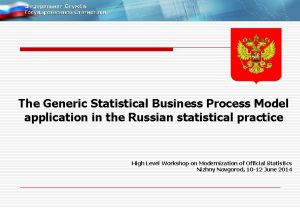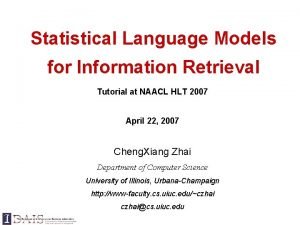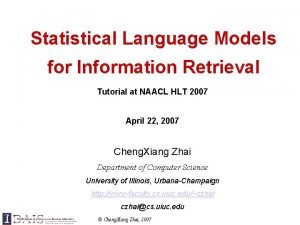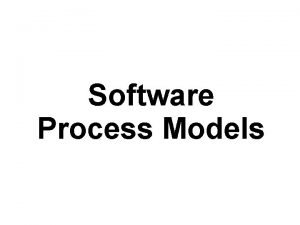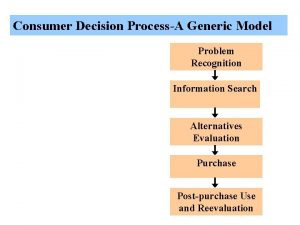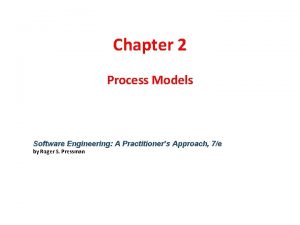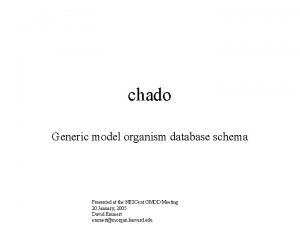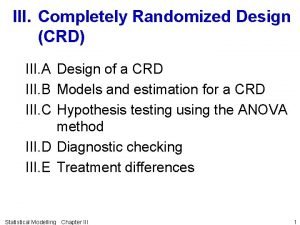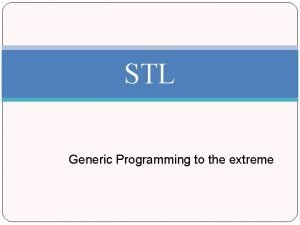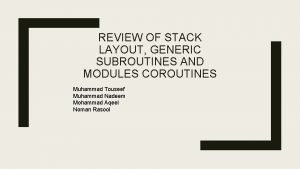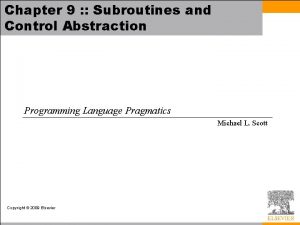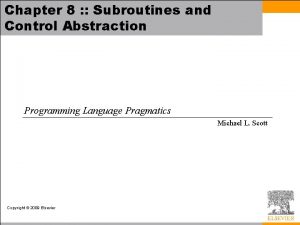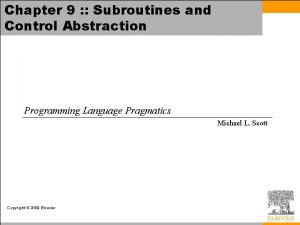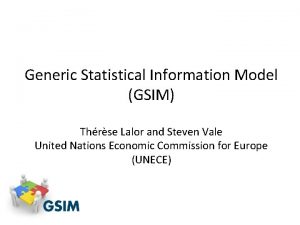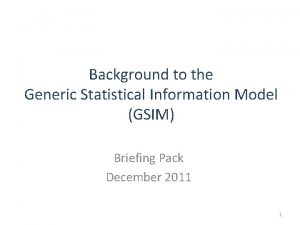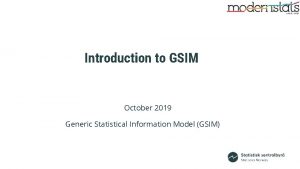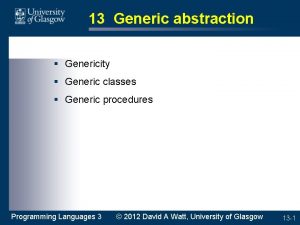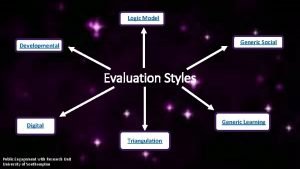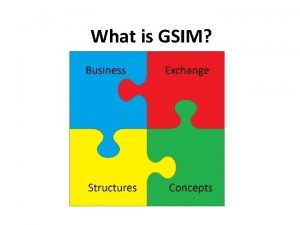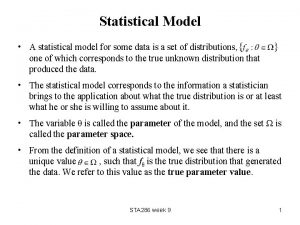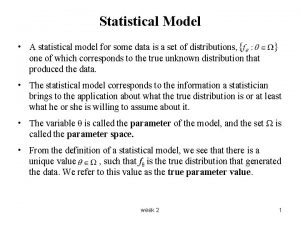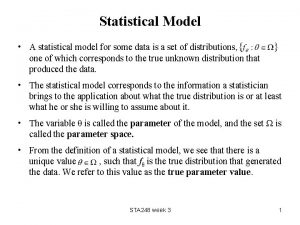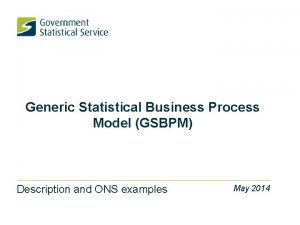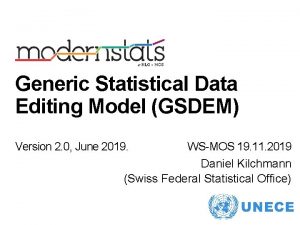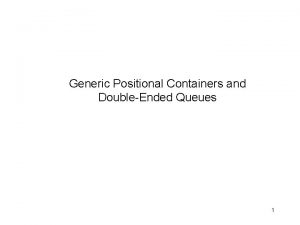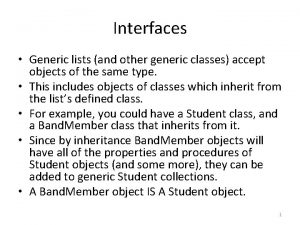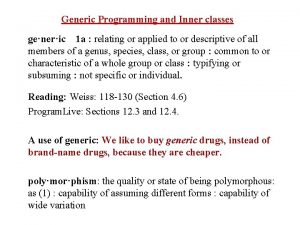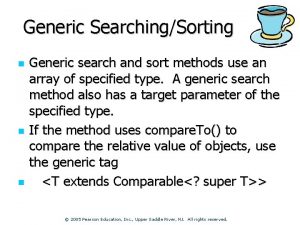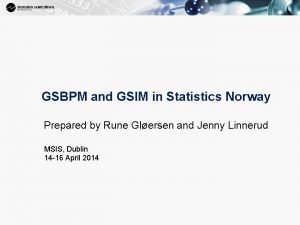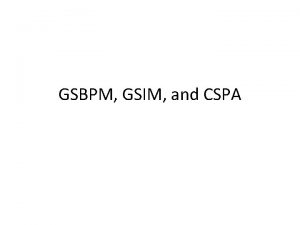Generic Statistical Information Model GSIM Thrse Lalor and

























- Slides: 25

Generic Statistical Information Model (GSIM) Thérèse Lalor and Steven Vale United Nations Economic Commission for Europe (UNECE)

The Challenges New competitors & changing expectations Increasing cost & difficulty of acquiring data Riding the big data wave Competition for skilled resources Rapid changes in the environment Reducing budget

These challenges are too big for statistical organisations to tackle on their own. We need to work together

Response from Official Statistics A High Level Group consisting of 10 heads of national and international statistical organizations was created

Using common standards, statistics can be produced in a more efficient way No domain is special!


The GSBPM

The GSBPM is used by more than 50 statistical organizations worldwide to manage and document statistical production

GSIM is complementary to GSBPM Another model is needed to describe information objects and flows within the statistical business process

Introducing the GSIM You are here

What is GSIM? • A reference framework of information objects • It sets out definitions, attributes and relationships regarding information objects • It aligns with relevant standards such as DDI and SDMX 11

Purposes of GSIM Improve communication Generate economies of scale Enable greater automation Provide a basis for flexibility and innovation Build staff capability by using GSIM as a teaching aid Validate existing information systems

GSIM is a conceptual model: It is a new way of thinking for statistical organizations

GSIM enables: • Communication • Coordination • Cooperation • Collaboration


Conceptual model GSIM DDI SDMX Implementation standards Other relevant standards Geospatial standards

1 7



may initiate Statistical Need Business Case initiates Statistical Program Design changes design of has defines identifies • CONCEPTS describes Concept Variable is associated with • • Population measures defines Classification Statistical Program may include Acquisition Activity Production Activity Dissemination Activity comprises specifies includes Process Input comprises specifies Process Step Unit uses specifies Statistical Activity has describes Process output may include STRUCTURES PRODUCTIONBUSINESS Data Structure has Data Set includes Data Resource uses Data Channel

GSIM: The “sprint’ approach • The HLG-BAS decided to accelerate the development of the GSIM • “Sprints” – 2 week workshops for 10 -12 experts (IT, methodology, statistics, . . . ) • Sprint 1 – Slovenia, February 2012 • Sprint 2 – Republic of Korea, April 2012 • Integration Workshop, Netherlands, September 2012

Moving to GSIM in practice GSIM could lead to: • A foundation for standardized statistical metadata use throughout systems • A standardized framework to aid in consistent and coherent design capture • Increased sharing of system components

Moving to GSIM in practice • Common terminology across and between statistical agencies. • It allows NSIs and standards bodies, such as SDMX and DDI, to understand map common statistical information and processes.

GSIM v 1. 0 • Released in December 2012 • We need people to use GSIM “in anger”. Then we will know how best to improve it.

More information GSIM � http: //www 1. unece. org/stat/platform/display/metis/Generi c+Statistical+Information+Model+(GSIM) � Poster Session @ EDDI � Today at lunch time �
 Modelo gsbpm
Modelo gsbpm Uiiss
Uiiss Generic statistical business process model
Generic statistical business process model Statistical language models for information retrieval
Statistical language models for information retrieval Statistical language models for information retrieval
Statistical language models for information retrieval Generic process model
Generic process model Generic strategy process model
Generic strategy process model Ood
Ood What encapsulates both data and data manipulation functions
What encapsulates both data and data manipulation functions Generic communication
Generic communication Problem recognition information search
Problem recognition information search Generic process model in software engineering
Generic process model in software engineering Generic model organism database
Generic model organism database Crd iii
Crd iii Generic programming and the stl
Generic programming and the stl Generic subroutines and modules
Generic subroutines and modules Diamond method factoring polynomials
Diamond method factoring polynomials Generic rectangle factoring
Generic rectangle factoring Generic and customized software product
Generic and customized software product Generic elective academic writing and composition
Generic elective academic writing and composition Generic structure mouse deer and crocodile
Generic structure mouse deer and crocodile Examples of generic goals and product-specific goals
Examples of generic goals and product-specific goals Generic subroutines and modules
Generic subroutines and modules Generic subroutines and modules
Generic subroutines and modules Kinds of story
Kinds of story Generic subroutines and modules
Generic subroutines and modules
